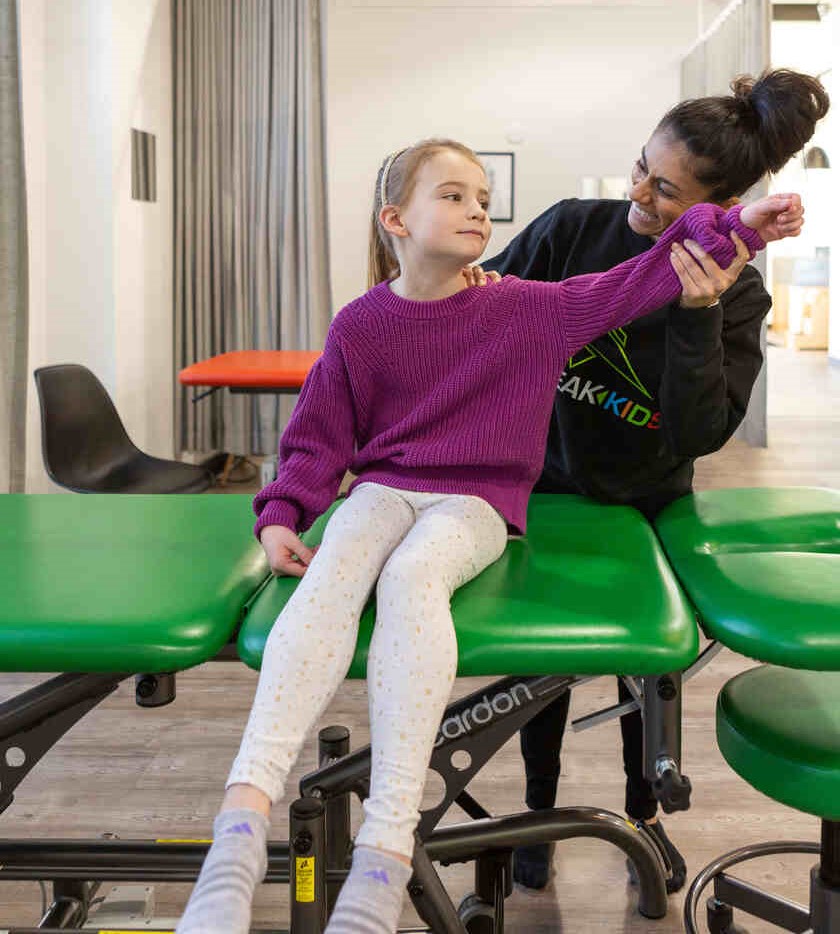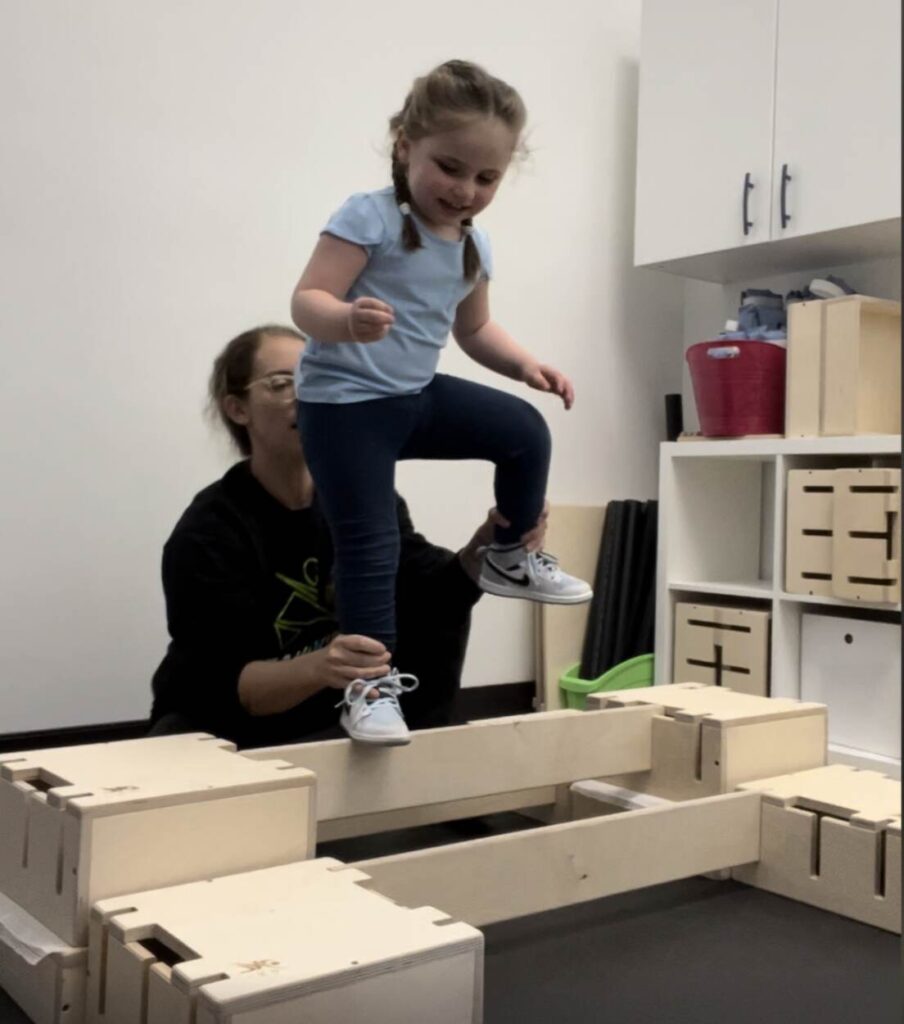Written by Physiotherapist Emma Bolt
As a pediatric physiotherapist in Calgary South who specializes in children with gross motor delays and complex neurological or genetic diagnoses, I am often asked how I treat children with these conditions and how it is different from physiotherapy services typically provided in the hospital and school programs. When I tell them I am a Dynamic Movement Intervention (DMI) practitioner the list of questions tends to grow. Let’s discuss these common questions!
What Is DMI Therapy?
Dynamic Movement Intervention (DMI) is used to treat children with motor delays, big or small, by improving their ability to respond to gravity’s demands on their body in various positions and promote progress to developmental milestones. Children actively participate in the exercises of this hands-on therapeutic technique, and exercises are selected based on each child’s specific needs.
As children grow and develop, the neural connections in their brains adapt to the world around them and how they move within that world. This neural connection change is referred to as neuroplasticity and is highest during our younger years. DMI uses this neuroplasticity to help create and strengthen neural connections required to achieve motor milestones.
DMI can also help increase a child’s awareness of their body with the integration of primitive reflexes.
How Do I Know If My Child Will Benefit From DMI?
Many of the families I have worked with over the last few years have frequently commented on the lack of hands-on therapy provided to their children. Parents often feel their child is capable of more than what they are currently doing, or being provided by their current physiotherapist. These families are often eager to learn strategies and tools to better support their child at home or are looking for a skilled and knowledgeable therapist who can provide therapy for their child to take the demand and stress off the parents to provide therapy themselves.
To take the greatest advantage of neuroplasticity, starting therapy young is ideal. However, this does not mean that older children do not benefit from DMI, just that the benefits could occur more slowly. Ideally, once a child begins to present with delays or is diagnosed with a condition that commonly results in delays, DMI therapy should be started. It is easier to proactively work towards preventing poor habits and motor patterns from happening than it is to alter pre-existing and strengthened neural connections that lead to poor movement habits.
I have provided DMI therapy to children all along the gross motor development spectrum. From 6-year-olds who are unable to roll without support, to 3-year-olds who are able to run and jump but experience frequent falls.
What Are the Most Common Conditions Treated With DMI?
Children diagnosed with any type of motor delay may benefit from DMI. Common conditions that I have experience working with include:
- Down Syndrome
- Cerebral Palsy
- Global Developmental Delay
- Hypotonia
- Spinal cord lesions (Spina Bifida)
- Acquired brain injuries
Children do not need a formal diagnosis to receive DMI therapy. Children at risk, such as children who are born prematurely, can also benefit from DMI.
How Long Does DMI Therapy Take to Work?
Some families have seen improvements in head or trunk control in as little as one session, however for strong neural connections to be formed DMI exercises should be performed frequently and on a regular basis. Exercises are taught to families to be performed at home to support a high frequency of DMI provision to a child. As each child and each diagnosis bring their own quirks and complications, it is difficult to provide a firm timeline for the achievement of particular gross motor skills.
Is DMI Painful for My Child?
While it is not uncommon for tears to be shed during the first few DMI sessions, appropriately and skillfully provided DMI therapy is not painful for a child. Many of the children I treat are either non-verbal or have limited communication abilities. Crying is often how these children communicate that an exercise is hard.
Many of the exercises are also challenging for the child as the goal is to build strength, endurance, and skill which requires targeting muscles or movement patterns that are weak. As children become more accustomed to the exercises, the therapist providing the therapy, and the expectation of actively participating they often begin to enjoy themselves and are excited to come for DMI sessions.
A wonderful article written by DMI co-founder JoAnne Weltman on crying and therapy can be found here: https://dmitherapy.com/crying-and-therapy-the-cortisol-learning-debate/
Key Takeaways
Dynamic Movement Intervention is a hands-on therapeutic technique for children with gross motor delays. Children actively participate in exercises specifically selected for their needs and level of function.
DMI stimulates neuroplasticity to create changes in the brain for more optimal movement patterns and to support the development of gross motor milestones. DMI can be provided at any age, however, greater benefits are seen when therapy is started during the first few years of life.

